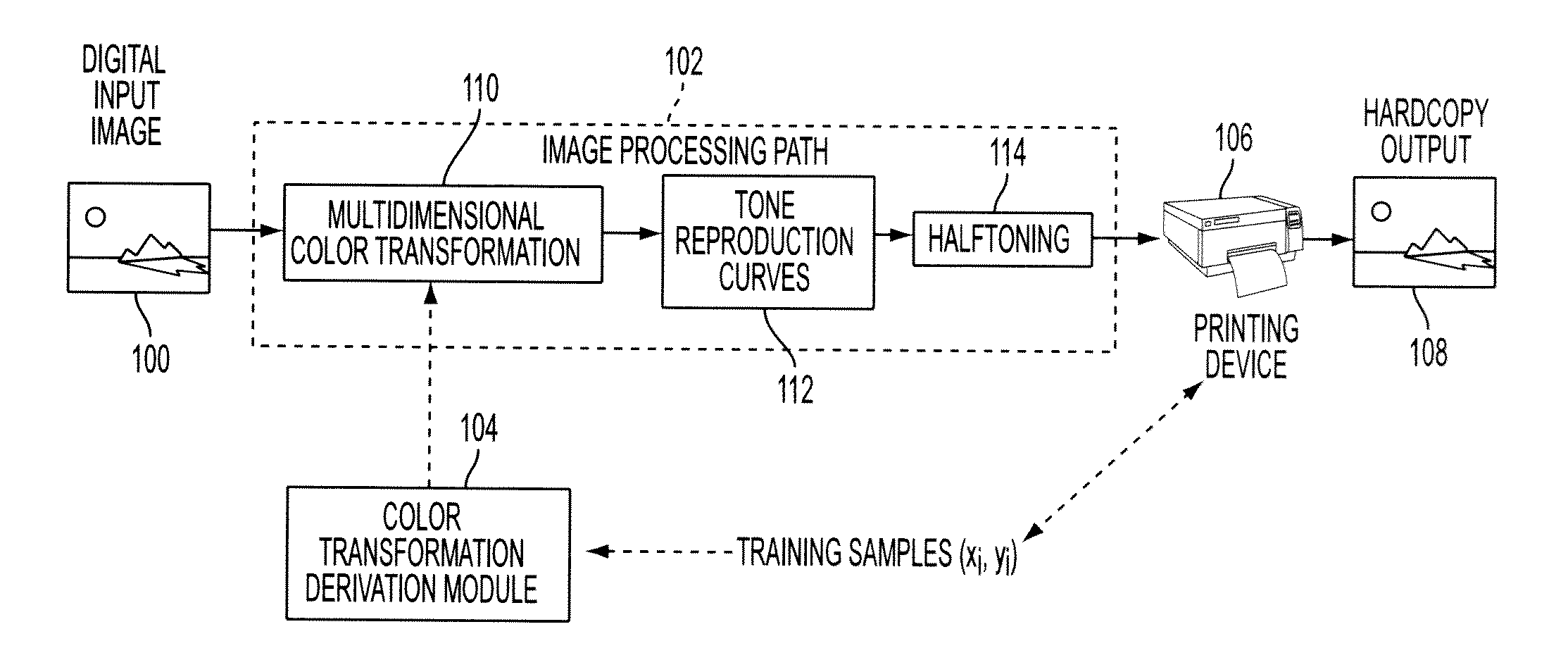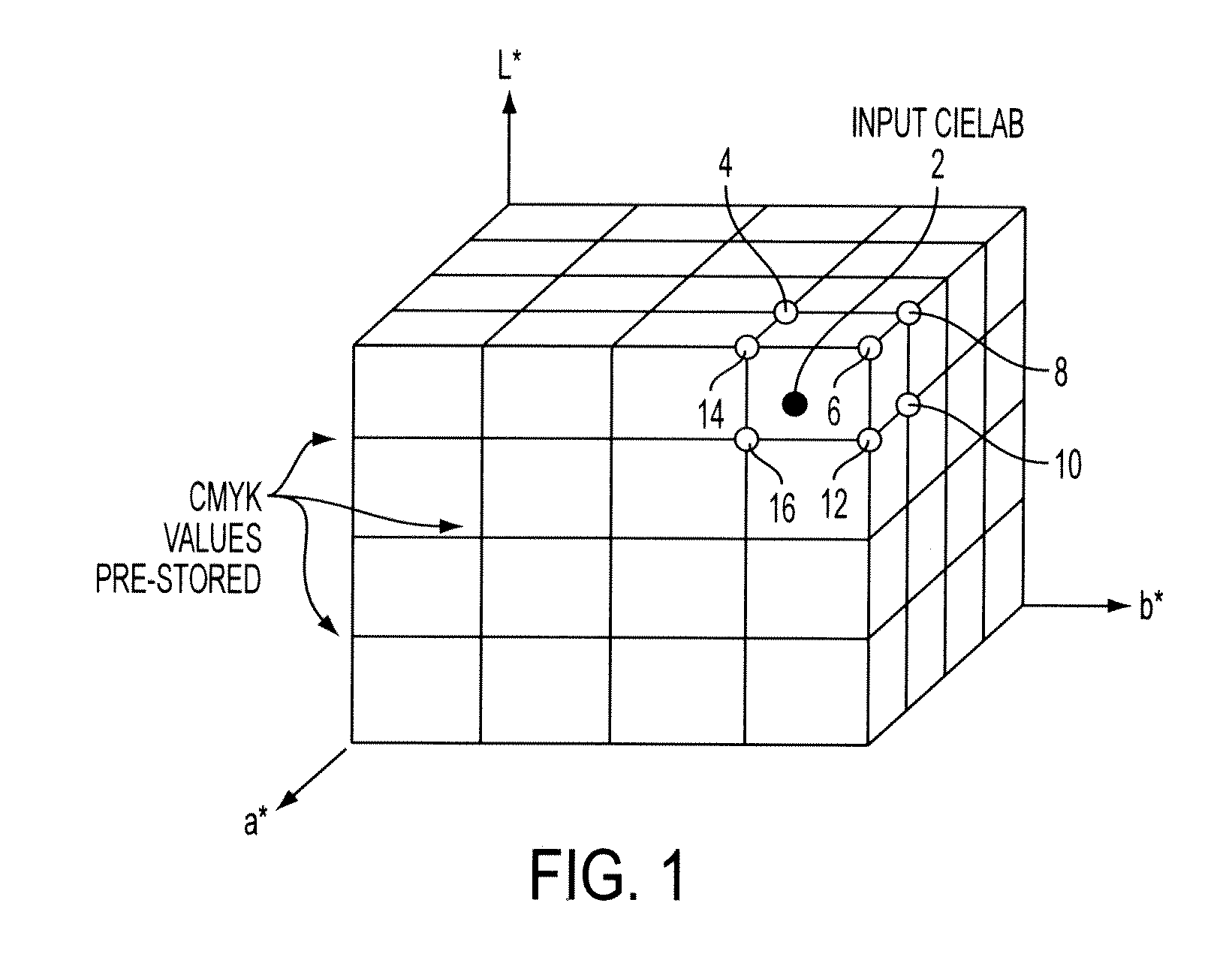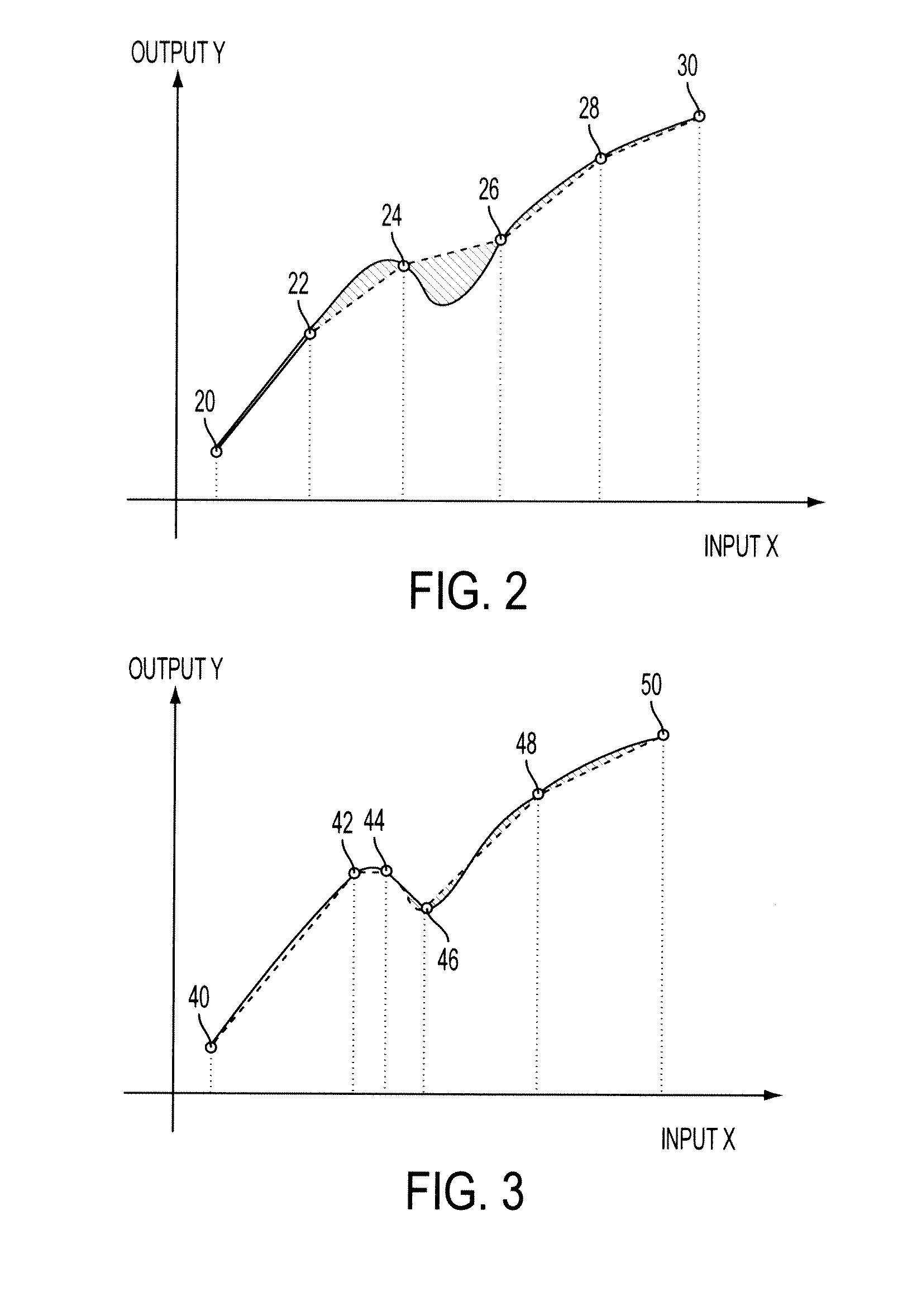Methods, systems and apparatus for jointly optimizing node locations and corresponding output values of a color look-up-table (LUT)
a color look-up and output value technology, applied in the field of color image processing, can solve the problems of not matching the red described in the rgb space and displayed on the video monitor, and no known attempt to simultaneously optimize the node location and valu
- Summary
- Abstract
- Description
- Claims
- Application Information
AI Technical Summary
Benefits of technology
Problems solved by technology
Method used
Image
Examples
embodiment 1 (fig.7)
Embodiment 1 (FIG. 7): Sequential Optimization of Node Location and ValuE (SOLVE)
[0057]Step 1: Using a training set, estimate the curvature of the transform and optimize node locations using a greedy technique which allocates more nodes in regions of higher transform curvature. (For example, the SSD algorithm in Monga et al., “INPUT-ADAPTIVE METHOD FOR COLOR TABLE LOOKUP,” U.S. Patent Application Publication No. 2009 / 0067017, published Mar. 12, 2009.) Let Xnd* denote the optimized node locations.
[0058]Step 2: For fixed node locations Xnd*, solve for the best output node values ynd* by minimizing the squared error:
∥ytr−WXnd*·ynd∥2.
[0059]For T>M, this is a well-posed convex problem with the minimizer given by:
ynd*=(WXnd*·TWXnd*)−1(WXnd*)T ytr
[0060]Note that the interpolation or weight matrix WXnd* is determined uniquely as the set of nodes Xnd* is known.
[0061]End: Xnd* and ynd* are determined as the node locations and output values respectively.
embodiment 2 (fig.8)
Embodiment 2 (FIG. 8): REpeated—Sequential Optimization of Node Location and ValuE (RESOLVE)
[0062]Step 1: Initialization—same as Step 1 of the SOLVE algorithm.
[0063]Step 2: For fixed node locations Xnd*, solve for the best output node values ynd* by minimizing
∥ytr−WXnd*·ynd∥2.
[0064]For T>M, this is a well-posed convex problem with the minimizer given by:
ynd*=(WXnd*·TWXnd*)T ytr.
[0065]Note that the interpolation or weight matrix WXnd* is determined uniquely as the set of nodes Xnd* is known.
[0066]Step 3: Based on the optimized vector of node output values ynd* in Step 2, optimize WXnd so as to minimize the cost function in Eqn (3).
[0067]The optimization is carried out subject to the following constraints:[0068]Selection constraint: wiTei=0, wi ∈ RM—ith row of W, ei—membership vector[0069]Non-negativity: wij≧0, i=1,2, . . . , T, j=1,2, . . . . , M.[0070]Interpolation constraint : WXnd·1=1, where 1 ∈ RM is a vector of all 1's.
[0071]The first constraint guarantees that any training poin...
PUM
 Login to View More
Login to View More Abstract
Description
Claims
Application Information
 Login to View More
Login to View More - R&D
- Intellectual Property
- Life Sciences
- Materials
- Tech Scout
- Unparalleled Data Quality
- Higher Quality Content
- 60% Fewer Hallucinations
Browse by: Latest US Patents, China's latest patents, Technical Efficacy Thesaurus, Application Domain, Technology Topic, Popular Technical Reports.
© 2025 PatSnap. All rights reserved.Legal|Privacy policy|Modern Slavery Act Transparency Statement|Sitemap|About US| Contact US: help@patsnap.com



